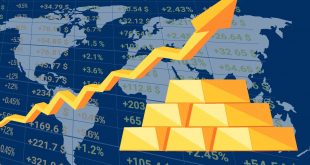In a bold move that has sent ripples through global markets, U.S. President Donald Trump has imposed hefty tariffs on 69 trading partners, effective August 1, 2025, after they failed to meet his deadline for submitting trade deal proposals. The tariffs, ranging from 10% to 41%, mark the culmination of a 90-day ultimatum set by the Trump administration, signaling a hardline stance on reshaping America’s trade relationships. With the deadline now passed, these nations face immediate economic consequences, while the world watches to see how this aggressive policy will unfold.
The tariffs, first announced as part of Trump’s “reciprocal tariff” initiative on April 2, 2025, were initially suspended for 90 days to allow negotiations. The grace period, later extended to August 1, gave countries a chance to propose trade agreements favorable to the U.S. However, with many nations failing to comply, the administration has now activated tariffs that hit key partners hard. Canada faces a 35% levy, Switzerland 39%, and India 25%. Several Arab nations are also affected, with Jordan facing a 15% tariff, Tunisia 25%, Algeria and Libya 30%, Iraq 35%, and Syria a steep 41%. These measures, set to take effect within seven days, are expected to disrupt global supply chains and raise costs for consumers.
Trump’s decision has sparked debate over its motives. Some analysts view the tariffs as a negotiating tactic to extract better trade terms, with the extended deadline seen as a pressure tool to force concessions. The administration has yet to clarify its next steps with China, a major trading partner, as a temporary trade truce nears its expiration on August 12. Trump has indicated he will decide soon whether to extend negotiations or impose the “massive” tariffs already slated for Chinese goods, adding further uncertainty to global trade dynamics.
The reintroduction of these tariffs, after a brief suspension in April, underscores Trump’s commitment to his “America First” trade agenda. Critics argue the move risks escalating tensions with key allies and could harm U.S. consumers through higher prices, while supporters claim it strengthens America’s leverage in trade negotiations. As markets brace for the fallout, the world awaits further clarity on whether diplomacy or escalation will define the next chapter of U.S. trade policy.
your

 Noor Trends News, Technical Analysis, Educational Tools and Recommendations
Noor Trends News, Technical Analysis, Educational Tools and Recommendations




